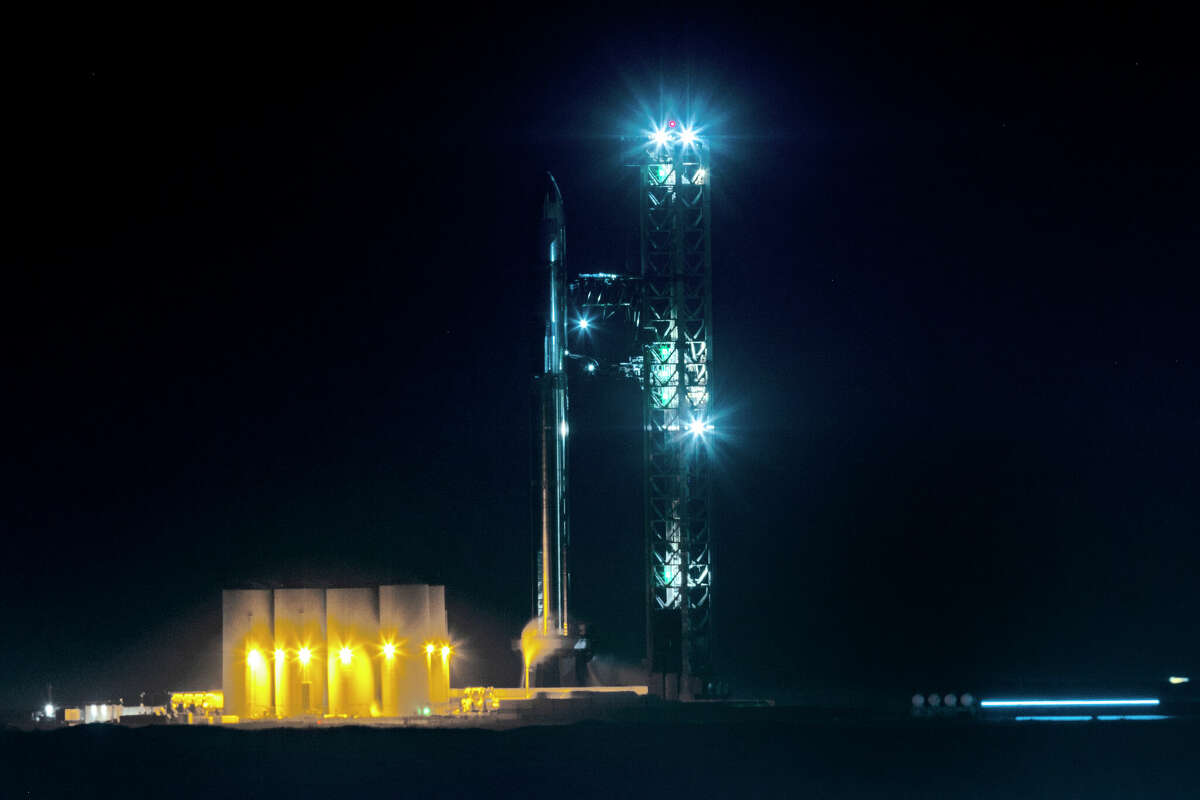SpaceX's Starship: Overcoming Back-to-Back Launch Setbacks

Table of Contents
Analyzing the First Starship Launch Attempt and its Failures
Pre-launch Issues and Technical Challenges
The first Starship launch attempt, while ambitious, was plagued by several pre-launch issues. These included:
- Engine Issues: Reports indicated potential problems with the Raptor engines, the powerful methane-fueled engines powering the Starship. Some engines failed to ignite, or experienced performance anomalies during pre-flight checks.
- Fueling Problems: The complex process of fueling the massive Starship presented challenges. Leaks and delays in the fueling process were reported, potentially impacting the launch timeline and overall readiness.
- Weather Conditions: While not the primary cause, unfavorable weather conditions, such as high winds, could have contributed to launch delays and potentially impacted the stability of the rocket on the launchpad.
The complexity of the Starship's design itself presents a major challenge. Integrating its numerous Raptor engines, the massive propellant tanks, the heat shield, and the sophisticated guidance systems requires flawless coordination. The sheer scale of the Starship – significantly larger than any other rocket currently in operation – multiplies the potential for integration issues. This experimental nature, pushing the boundaries of existing rocket technology, is inherently risky and contributes to the challenges encountered.
Post-launch Analysis and Lessons Learned
The first Starship launch ended in a rapid, uncontrolled explosion shortly after liftoff. The events leading to the failure included:
- Rapid Engine Failure: Multiple Raptor engine failures shortly after ignition contributed to the loss of control.
- Structural Damage: Preliminary reports suggested potential structural damage to the rocket, possibly caused by aerodynamic forces or engine malfunction.
- Loss of Control and Explosion: The combination of engine failures and potential structural issues resulted in the loss of control and the subsequent explosion.
SpaceX has committed to a thorough post-flight data analysis, gathering data from various sensors and telemetry systems. This data is crucial in identifying the root causes of the failure and informing design modifications and improvements. While SpaceX hasn't publicly released all details of the investigation, statements from officials indicated a commitment to learning from the experience and integrating those learnings into future Starship iterations.
The Second Starship Launch Attempt: A Deeper Dive into the Problems
Comparing and Contrasting the Two Launch Attempts
The second Starship launch attempt, while showing some improvements in pre-launch preparations, ultimately resulted in a similar outcome: a rapid disintegration shortly after liftoff. While both launches suffered from catastrophic engine failures, the specific details differed. The second launch may have highlighted different vulnerabilities in the design or operational procedures, signifying the ongoing challenges in mastering this complex system. The similarities, however, underscore the systemic nature of some of the challenges.
Examining the Root Causes of Repeated Failures
The repeated failures point towards several potential root causes:
- Raptor Engine Reliability: The reliability of the Raptor engines remains a key concern. Repeated failures suggest the need for significant improvements in engine design, manufacturing, and operational procedures.
- Structural Integrity: The sheer size and complexity of the Starship might necessitate further analysis and strengthening of its structural design to withstand the stresses of launch.
- Software Glitches: Sophisticated software controls numerous aspects of the launch. While less likely to be a sole cause, software glitches cannot be ruled out and warrant rigorous testing and validation.
The iterative nature of rocket development is evident in SpaceX’s approach. The rapid iteration cycle, while efficient, carries a higher risk profile in the initial phases. Every launch serves as a critical test and data gathering exercise, guiding further refinements and improvements in the design.
The Road to Success: SpaceX’s Strategies for Overcoming Setbacks
Technological Improvements and Design Modifications
Based on the failures, SpaceX is likely implementing several technological improvements and design modifications:
- Raptor Engine Upgrades: Improving the Raptor engine’s reliability, perhaps through design modifications, materials upgrades, or improved manufacturing processes.
- Structural Reinforcements: Strengthening specific structural components identified as weak points during the post-launch analysis.
- Improved Testing Procedures: Implementing more comprehensive and rigorous testing procedures to identify and mitigate potential problems before launch.
SpaceX's commitment to rapid iteration and adaptation is key to its ability to overcome these setbacks. The company's history demonstrates a willingness to learn from failures and incorporate the lessons learned quickly and efficiently.
The Importance of Rigorous Testing and Simulation
The Starship program highlights the critical role of rigorous testing and simulation in rocket development. This includes:
- Extensive Ground Testing: Conducting more extensive ground tests on individual components and the entire system before committing to further launches.
- Advanced Simulations: Utilizing advanced computer simulations to model and analyze different scenarios, including potential failure modes.
- Improved Data Analysis: Developing improved data analysis techniques to gain a deeper understanding of the failure mechanisms and to inform future design iterations.
A robust testing regime, coupled with a thorough post-failure analysis, will be paramount in ensuring the successful development and deployment of the Starship.
Conclusion
The back-to-back Starship launch setbacks represent significant challenges, highlighting the complexity of developing and launching such an innovative and ambitious system. However, SpaceX's response reflects a commitment to learning from failures and iteratively improving the design and operational procedures. The issues encountered, from Raptor engine reliability to structural integrity, are being actively addressed through technological improvements and a more rigorous testing regime. The future of the Starship program remains promising. SpaceX’s resilience and determination, combined with its ability to learn and adapt, suggest that despite the setbacks, the Starship will eventually achieve its ambitious goals. Follow SpaceX's Starship journey; stay tuned for updates on Starship launches and learn more about the Starship program's future.

Featured Posts
-
 Toprak Razgatlioglu Addresses Moto Gp Transfer Speculation
May 29, 2025
Toprak Razgatlioglu Addresses Moto Gp Transfer Speculation
May 29, 2025 -
 The Truth Behind Morgan Wallens Abrupt Snl Cancellation
May 29, 2025
The Truth Behind Morgan Wallens Abrupt Snl Cancellation
May 29, 2025 -
 Fincantieri Builds New Cruise Ships For Tui Uk
May 29, 2025
Fincantieri Builds New Cruise Ships For Tui Uk
May 29, 2025 -
 Droge Omstandigheden Massale Annulering Paasvuren Drenthe
May 29, 2025
Droge Omstandigheden Massale Annulering Paasvuren Drenthe
May 29, 2025 -
 Mother Found Guilty Black Girl Sold For Eyes And Skin
May 29, 2025
Mother Found Guilty Black Girl Sold For Eyes And Skin
May 29, 2025
